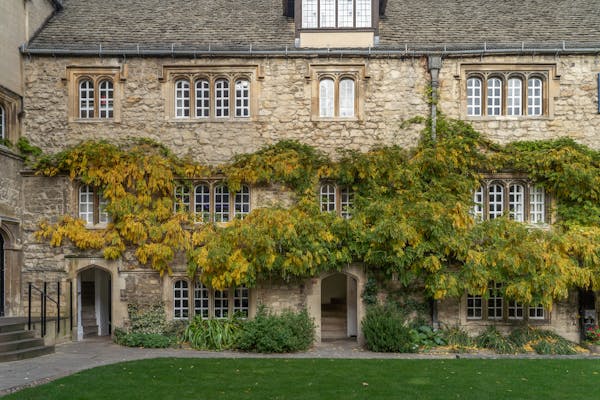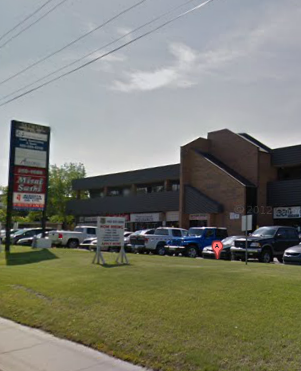Although his home was rural Vermont, Norman Rockwell knew about the integrated urban neighborhoods thriving in 1940’s America. Long before interstates, Levittown, and “white flight,” working-class neighborhoods in Troy, New York and Los Angeles, California attracted the famous illustrator. He drew sketches and took photographs of their tenements and people, and these sketches provided the backdrop for two of Rockwell’s most memorable Saturday Evening Post covers, Homecoming GI (1945) and Road Block (1949). And true to their urban theme, both of these illustrations include African Americans.
Troy, known as “The Collar City,” was home to Arrow Shirts, whose “Arrow Collar Man” was made famous by advertisements created by Rockwell’s mentor and friend, J.C. Leyendecker. Troy was a booming factory town, manufacturing four million collars a week during the 1920’s. Another source of industrial fame for the town was its ironworks, fabrications that, in the mid-1800’s, were second only to those of Pennsylvania.
From his Vermont home, Norman Rockwell frequently traveled through Troy on his way to Albany, New York where he caught the train to New York City. When the artist decided to create a Post cover commemorating World War II vets coming back to their home towns, he decided to make that home town working-class Troy, New York.
Homecoming GI appeared on the cover of the Saturday Evening Post on May 25, 1945. Among the folks gleefully (or shyly, in the case of his young sweetheart) welcoming home the young soldier is not only Norman Rockwell himself (standing in a doorway of the tenement), but also two young boys recklessly hanging from a tree they have climbed, wildly waving a welcome. One of the two boys is black.
In 1945, kids just went out to play. No “helicopter parents,” no play dates. Black and white kids frolicked and fought together up and down America’s streets. Think “Our Gang”. Elsie Wagner Fenic, in her moving memoir White Girl in Harlem, provides a lovely glimpse into this time. A second generation Polish-American, Fenic can still jump a pretty mean double dutch, thanks to spending her first nineteen years enjoying 1940’s New York City street games with black and Latino friends.
Norman Rockwell put black and white playmates together in Homecoming GI, not to make a civil rights statement, but because, on the streets of Troy, New York in 1945, they were really there.
Another Norman Rockwell urban setting was Los Angeles, California.
During the winter of 1948-49, while vacationing with his in-laws in Los Angeles, Rockwell paid a visit to a Mrs. Merrill, widow and owner of a rooming house for women. He wanted to borrow her entire house.
Located in the MacArthur Park neighborhood of Los Angeles, 719 South Rampart Boulevard was a three-story tenement flanked by similar structures and the “Pacific Telephone and Telegraph” building, the place of work for many of Mrs. Merrill’s boarders. Rockwell sought Mrs. Merrill’s permission to stage a photo shoot in front of her building. Capturing the street as well as some of its residents as models, he would then use these photos to create one of his famous Saturday Evening Post covers. But Mrs. Merrill said no. Apparently, even back in 1949, not everybody loved Norman Rockwell.
The feisty middle aged landlady felt that, in his paintings, the famous artist did not adequately “enhance” his female subjects. Rockwell persisted in his request however, and Merrill finally gave in: for payment of $50.00.
The camera crew showed up on South Rampart while one of Mrs. Merrill’s roomers, Antonia Piasecki, was doing her laundry. In a letter to the Norman Rockwell Museum she writes: “Mr. Rockwell asked me for some fancy undies for the clothes line. I gave him nylon stockings, black lace trimmed panties and a bra which he hung up himself… “
A moving truck arrived, complete with California license plates and two moving truck drivers. Lots of photos were taken. The result was Road Block, the character-filled illustration which appeared as the cover of The Saturday Evening Post on July 9, 1949.
Norman Rockwell put himself in the painting: he’s the violin teacher looking out the window of what was actually Ms. Piasecki’s bedroom. Ms. Piasecki also got to be a Rockwell model: she’s the young woman leaning out the window below Rockwell. The red-haired lady standing at the basement door? That’s the resister-turned-Rockwell model, Mrs. Merrill. The models for other figures in the painting have been identified, as well: Joseph Magnani, director of the Los Angeles County Museum of Art and a friend of Rockwell’s, is the artist hanging out of the window in a building across the street, accompanied by a barely-draped young lady. Peter Rockwell, the artist’s youngest son, is the bespeckled boy with the violin right below them. But Ms. Piasecki does not remember “there being all those children (at the shooting site) at the time.”
“All those children” is probably Ms. Piasecki’s polite code for the two little black kids posed at the bottom of the scene. They stand solemnly with their backs to the viewer, studying the impasse created when the big red truck meets a little white dog.
Apparently, Norman Rockwell didn’t actually encounter any black children on South Rampart Street that day. But given his understanding of similar neighborhoods like those in Troy, New York, he knew they were there, somewhere. So the intrepid artist went out and found them.
***
They are touching in elegance, innocence and simplicity. Two black children, a little girl and an older boy, in rear profile. The black and white photo in the Norman Rockwell Museum archives shows the boy’s shirt crisply pressed, the little girl’s braids impeccably arranged. Both are standing holding their hands behind their backs, staring out at an unseen horizon.
The names of these two little models are unknown. Nothing is written on the back of the photo. The meticulously kept Rockwell receipts do not reveal who was paid for posing for this shot. The locale of the photograph, although it appears to have been taken in Los Angeles, is not known for sure either.
But this is known: in 1949, Norman Rockwell purposely went out and found two black children to model for him so he could place their figures in his illustration. Rockwell knew they were supposed to be in the picture.
The house at 719 South Rampart Boulevard has disappeared. Where the building once stood now stands a parking lot. In the 1950’s, integrated neighborhoods began disappearing from America. Correspondingly, people of color disappeared from Norman Rockwell’s 1950’s paintings as well.






More Stories
IMT Centre For Distance Learning
Maritime Law Assessment For Maritime Employee
Integrating Ethics Into Your Organization